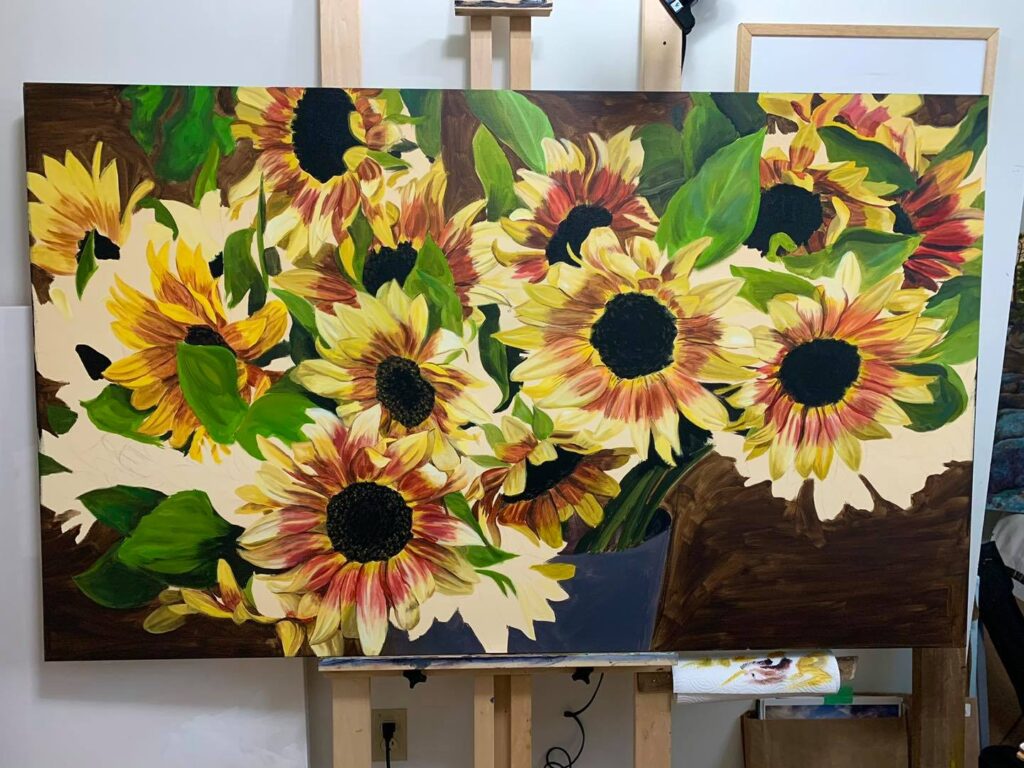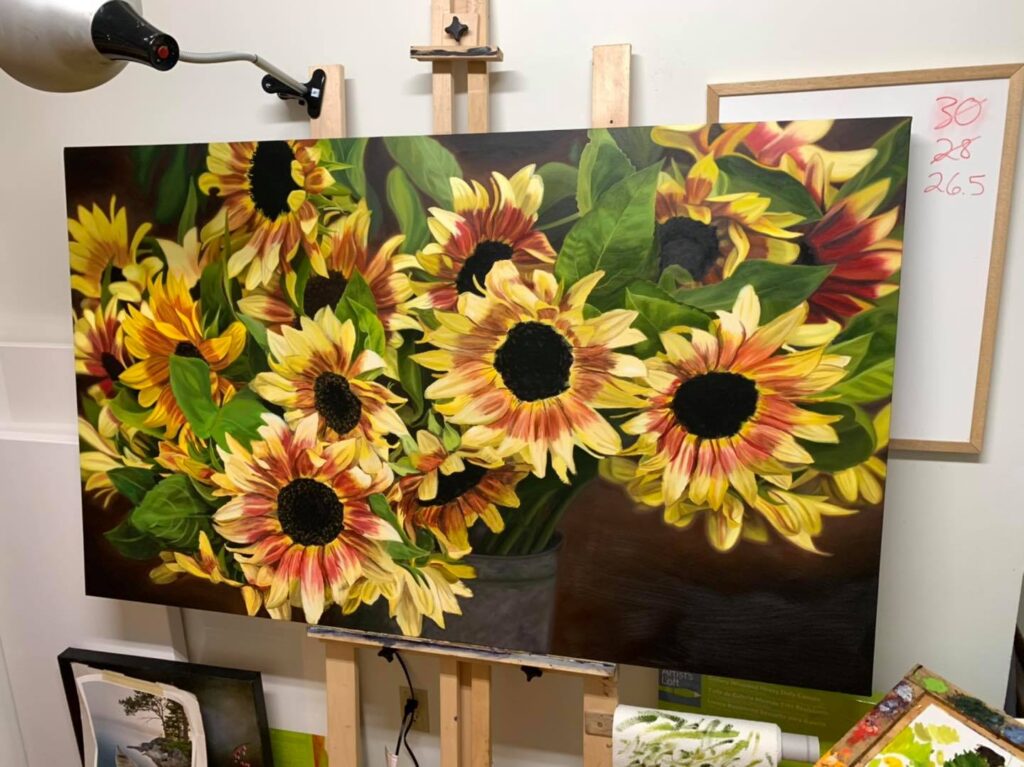On Wednesday, my latest painting, Helianthus, will be picked up by the buyers. To say I'm excited is an understatement; while I love creating new pieces, I'm never keen to hang onto them. I'd prefer that they head on their merry way out the door, so I can continue to create new work.
But to say I'm floored by the reaction to Helianthus would also be an understatement. It has been so fun to share the behind the scenes process of creating this painting with followers from my Facebook and Instagram pages (don't forget to follow me there, if you aren't already...). Now that the painting is complete, I figured I'd share the process with you from start to finish, to give some insight into process, and to explain why I dislike the dreaded T word...talent.
Let's Start from the Very Beginning

Ahhh, the blank canvas. Everyone's favourite. The excitement, the possibility, the boundless potential...all right here. It's so easy to feel "motivated" at this point. As always, I went with a yellow ochre ground of gesso on this canvas, and did three layers of priming and sanding to get a nice, smooth surface. Though it's difficult to see here, I also did my drawing using pencil crayons.

Next was to get the basic colours in, to help me see the flowers. I like to do this layer in acrylic, because it dries faster. By inserting the centres, background and bucket, I was able to create a visual map that I could work from.

Next up, I continued to add in flowers using acrylics, simply because they dry quickly. This part took probably 10-15 hours alone. I wanted to make sure that I had the values roughly accurate; value meaning the light to dark scale of colours in the painting. Because I was working on such a large scale piece, going in with acrylics first gave me a base upon which to build; were I to do this painting again, I would likely go straight into oils. Basically, I see the acrylic underpainting as a support, or foundation, for ensuring that the overall painting was in harmony. From there, I could build up my oils.

From here, I started to play with depth of field. I blurred out the background flowers, and sharpened those in the foreground. I put little halos of warmth around the leaves and petals to make them look like they were glowing. It was around this time I started realizing how daunting this painting actually was. I initially estimated it would take me about 80 hours to complete this painting. It wound up being closer to 120. On the whiteboard to the right of the flowers, you can see how many hours I thought I had left at this point; this turned out to be so far off the mark I gave it up when I reached 2 remaining and there was clearly another 20 to go. I couldn't help myself, the paint just wanted to be finessed.

And so, 9 months after I started it, after over 120 hours in front of the easel working on it, Helianthus was completed. This painting felt a lot like my thesis; at times, it was actually painful to work on. During the early stages of lockdown, I would be at home with my kids, sometimes for 12 hours without support, and after they went to bed I'd stumble down to the studio, set a timer for 90 minutes, and paint for those 90 minutes. It wasn't a reprieve from a long day, it wasn't a fairytale romp down inspiration lane, it was a grind. Dishes would be left unwashed. Laundry would pile up. Meals would go unplanned. But this was my priority, and it needed to get done.
Don't Call it Talent
This is why I balk at the word "talent." Talent implies an effortlessness to execute, like it just flows from some divine source as naturally as breathing.
My work is a bit more like running a marathon. Talent means very little in a marathon; being able to complete the event boils down to whether you have logged enough hours training, made nutrition choices to support your efforts, and suffered through gruelling runs for months ahead of the actual race. Similarly, any talent one has as an artist is not as important as being able to persist through setbacks or battle with boredom. As far as I'm concerned, "motivation" doesn't exist. What does exist is commitment and habit; fortunately, I am in full control of those.
This painting was more like an ultramarathon, but what doesn't kill you makes your stronger. Now, I'm committed to getting even faster, even more skilled. I want to grow. I want to improve. I want to create work that stops viewers in their tracks. Getting there will take even more blood, sweat and tears. So please, don't call it talent...call it stubbornness.
Fortunately, anyone can be stubborn, it's the hallmark of a lifelong learner. So if you're ready to commit to being stubborn with me, keep following my page, my Instagram, and my blog. As we leave summer behind and get ready to greet the fall, I will be launching even more art classes and teaching programs that you can participate in. Cheers to being stubborn together!


Leave a comment